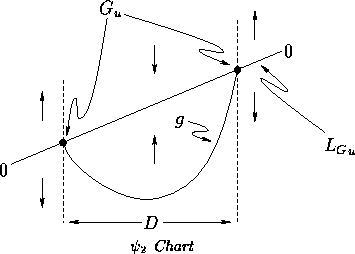We will determine ![]() for any concave up function
for any concave up function ![]() .
Since g is concave up,
.
Since g is concave up, ![]() .
Let
.
Let ![]() ;
we assume that
;
we assume that ![]() , so
we may take
, so
we may take
![]() .
A simple proof by contradiction, which follows, shows that
.
A simple proof by contradiction, which follows, shows that
![]() is an upper bound for g:
is an upper bound for g:
![]()
Assume that there is a point ![]() such that
such that ![]() .
Let
.
Let ![]() , so
, so ![]() .
Furthermore,
.
Furthermore, ![]() and
and ![]() imply that
imply that ![]() .
.

The assumptions made do not overly restrict the applicability of the proof.
The bound is optimal, since ![]() may not be lowered.
Lowering
may not be lowered.
Lowering ![]() would lower
would lower ![]() or
or ![]() , invalidating
, invalidating ![]() as an upper bound.
as an upper bound.
| Jeff Tupper | March 1996 |